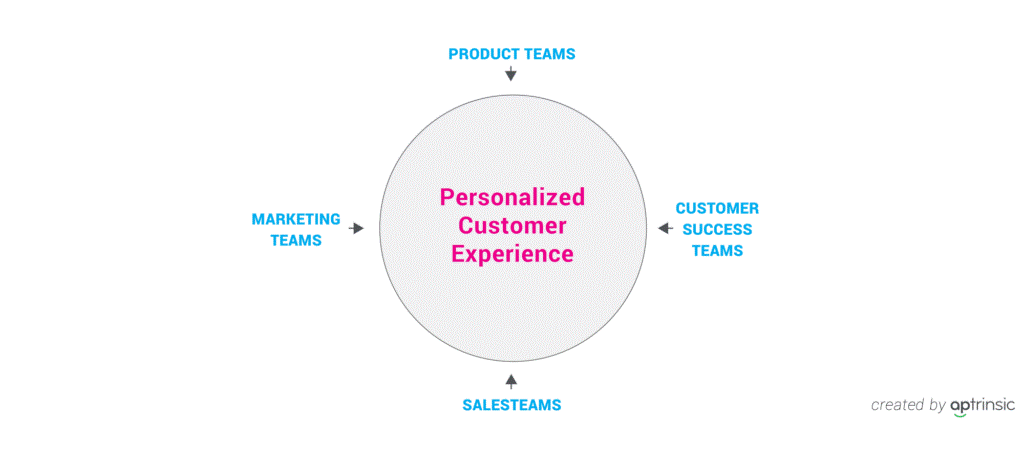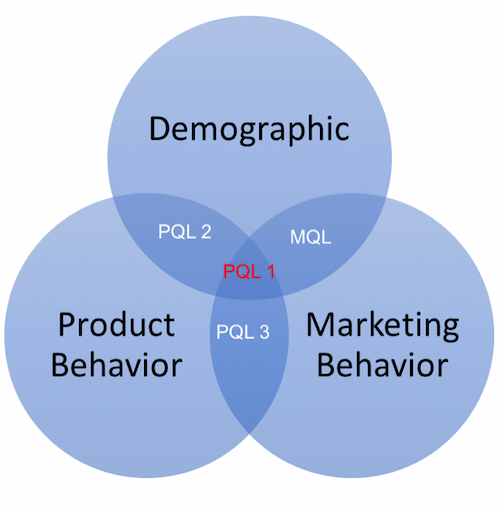Today, SaaS companies need a customer-centric focus if they are to compete in the digital space – and that means aligning product and marketing teams from the outset.
Today, SaaS companies need a customer-centric focus if they are to compete in the digital space – and that means aligning product and marketing teams from the outset.
However, many companies still keep their departments in silos, which leads to a disjointed customer acquisition approach, and onto disconnected customer experiences.
It begins with the marketing department, which produces and publishes content in order to boost awareness and generate MQLs (marketing qualified leads). These leads are nurtured until they become SQLs (sales qualified leads), at which point they are passed along to the sales department, which is responsible for closing deals. Next, the sales department hands the customers along to the customer service department, which is tasked with ensuring that satisfaction is high and churn rates are low.
The success of each department is measured by different sets of criteria: marketing, by lead volume and quality; sales, by close rates and revenues generated; and customer service by retention rates.
All, it seems, are driven by different goals. What’s more, each department will also use different software and systems as they go about their work. Marketing automation tools are used, of course, by the marketing department; CRM systems find their true home in sales; and customer service relies on other tools that predict churn risk in customer segments.
With everyone pulling and pushing in different directions, creating a customer-centric focus is nigh-on impossible.
Developing a Customer-centric focus
In order to create an outstanding prospect-to-customer experience, companies need to change the way their departments collaborate – or indeed, get their departments to start collaborating in the first place.
And it’s not just marketing, sales and customer service – the product department needs to get in on the customer acquisition process as well.
This is important. When generating leads, product analytics and user behavioural data are vital pieces of the puzzle if the rest of the team is to guide prospects and customers through the various lead lifecycle stages.
And of course, despite marketing, sales and customer service’s best efforts, sometimes it will be the product itself that is causing problems with customer acquisition. If this is happening and a process of aligning product and marketing teams hasn’t already taken place, it can take a long time before it is realised that it is the product that is hindering acquisition – and even longer before non-product departments manage to convince the broader organisation that something needs to be fixed.

(Image source: labs.openviewpartners.com)
Aligning Product and Marketing Teams to Drive PQLs and MQLs
At the end of the day, product experiences form the core of the whole customer experience. And it is for this very reason that the product department needs to be involved with the whole marketing, sales and customer service process.
Customer relationship management (CRM) systems have historically formed the customer and prospect data hub of organisations. While today these are very powerful tools indeed, what they don’t offer is a means to collate and analyse in-product behavioural data.
Separate tools, of course, may be used for such purposes. But the problem is that it is very difficult to align product usage data with customer data that’s stored in the CRM – lead lifecycle stage, content marketing assets received, free trial and subscription details.
What’s required is for SaaS companies to create a unified data warehouse that can be accessed from a centralised location, in order to get a 360-degree view of all data generated by known customers and prospects using the product.
This data will include profile data (name, title, contact information), firmographic data (size of company, number of employees, annual turnover, subscription level), and behavioural data (number of logins over a period of time, number of features used and how frequently, number of completed core use cases, and number of daily and monthly active users at the company).

(Image source: saleshacker.com)
With this data, the goal of aligning product and marketing teams will be to design and deliver a sterling customer experience across the whole customer journey.
To do so, you will need to tie customer experience metrics to the core objectives of each department.
Product qualified leads (PQLs) are the perfect metric for your product team to focus on. PQLs are leads that that have been using a version of your SaaS product for some time – usually a free trial – and have taken some sort of action that indicates that they are highly likely to convert into a paying customer.
These actions could be anything from accessing a certain feature to the number of clicks made, the time spent in the application, or any other variable.
By analysing this behavioural data, the product team can then work on the product to ensure that PQLs are getting the best user experience possible, and that the journey is optimised for conversions. In turn, the product team can then work with both the sales and marketing teams to ensure that PQLs – as they become MQLs and SQLs – are in receipt of the most appropriate information that will, again, support the conversion.
Aligning product and marketing teams also means creating greater collaboration throughout the whole organisation. For example, even though marketing’s primary role is to drive awareness and generate leads, it should also be communicating with customer services to see which prospects eventually became loyal customers.
Sales should also work with customer services to track customer lifetime value (CLTV), customer services should be feeding back to marketing, and the product team needs to be on-hand everywhere reporting to each department its in-depth knowledge about the user experience for every lead and customer at every stage of the lead lifecycle.
Over to You
Aligning product and marketing teams is the only true way to put customer experiences at the core of your SaaS company’s ongoing customer acquisition strategy.
As with so many things today, the process will rely heavily on data, but fostering an environment of greater collaboration across departments is essentially what will make the real difference, and will lead to improved long-term customer satisfaction and experience levels.
If you need help aligning your product and marketing teams, get in touch with the high growth experts here at Incisive Edge today.










